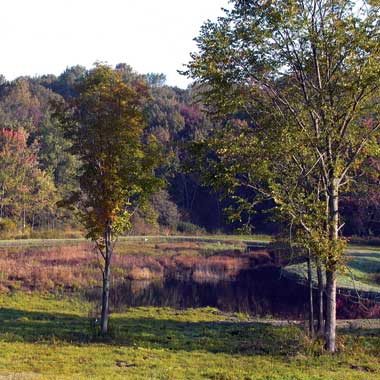Delaware Bay Priority Area
The Delaware Bay is one of the most important wintering areas in North America and is a major link in the migratory chain that stretches from South America to Canada along the Atlantic flyway. In the Delaware Bay watershed, land use conversion and land management practices have resulted in widespread loss, fragmentation, and degradation of wildlife habitat, and deterioration of the quality of water entering the bay. Coastal and riverine marshes within this priority area have been extensively ditched for mosquito control, and degraded by roadways and railway lines.
The conservation focus is on habitat restoration and improvements in the lower watershed and coastal marshes and key sub-watersheds that influence water quality in the bay. Conservation efforts will concentrate on restoring wetland hydrology to sites by plugging drainage ditches, re-creating open water habitat, constructing low-level berms, creating shallow excavated areas, and installing water control structures. Riparian upland buffers will be restored to native grasses, trees, shrubs, and other habitat components.
Management of restored emergent wetlands within this watershed will benefit migrating and wintering green-winged teal, American black ducks, mallards, and northern pintails. Breeding and nesting habitat will increase as wetlands and grassed and forested wetland buffers are restored. Further, Canada geese, snow geese, and tundra swans will use the protected fields and restored wetlands as wintering habitat. Water quality in the bay will be improved by restoring wetlands and uplands across the watershed. These conservation practices will eventually contribute to the restoration of SAV beds throughout the bay.

Ducks Unlimited uses cookies to enhance your browsing experience, optimize site functionality, analyze traffic, and deliver personalized advertising through third parties. By continuing to use this site, you agree to our use of cookies. View Privacy Policy